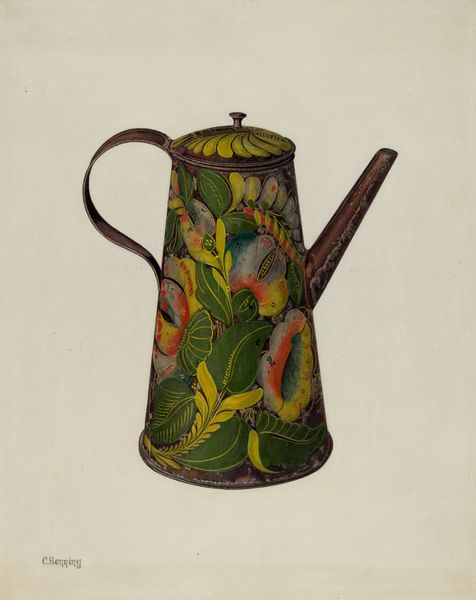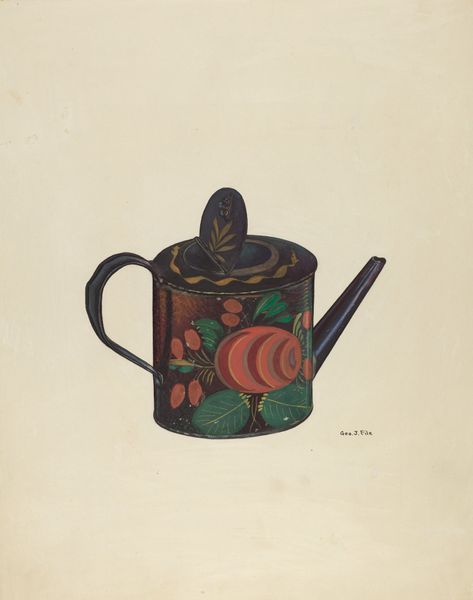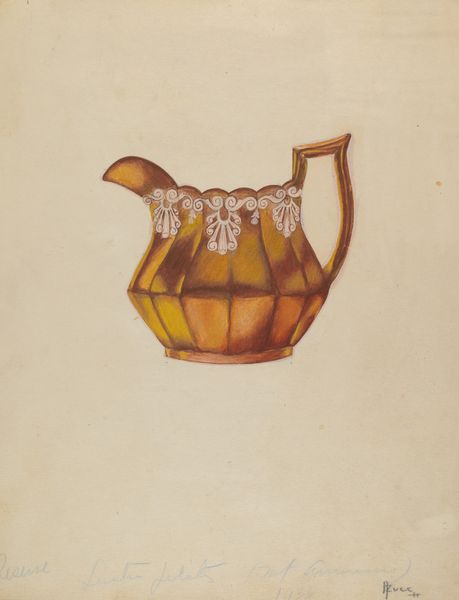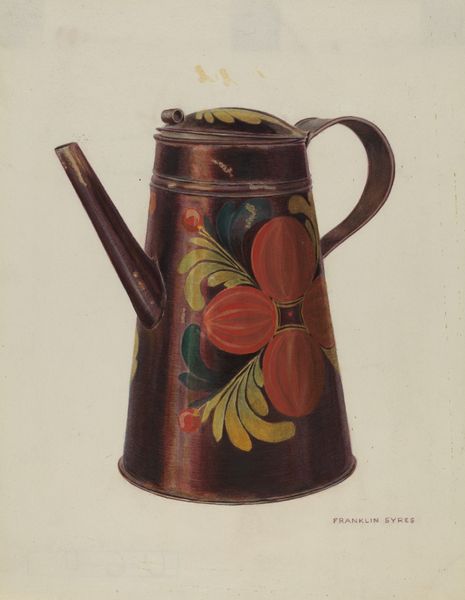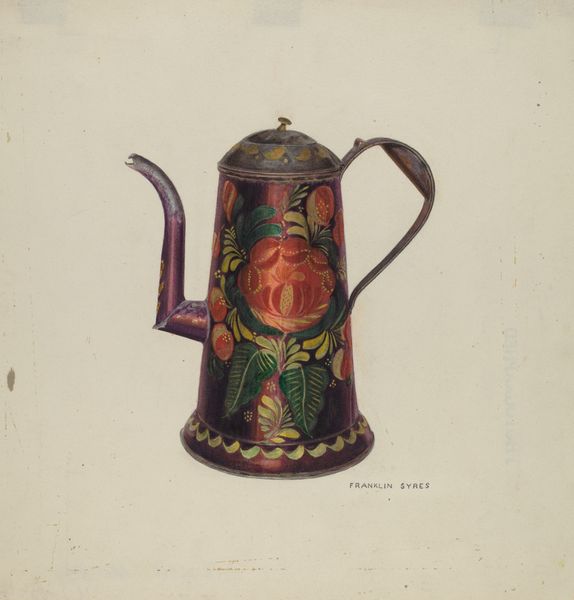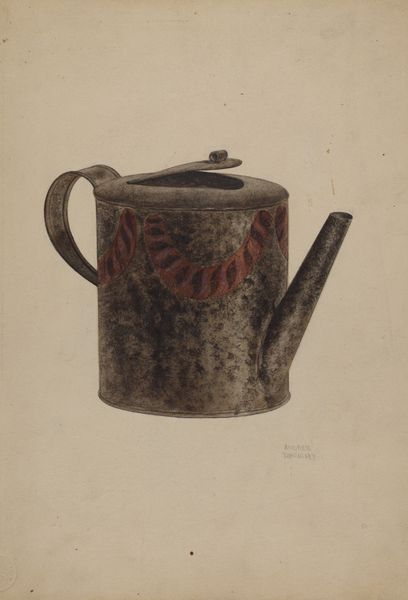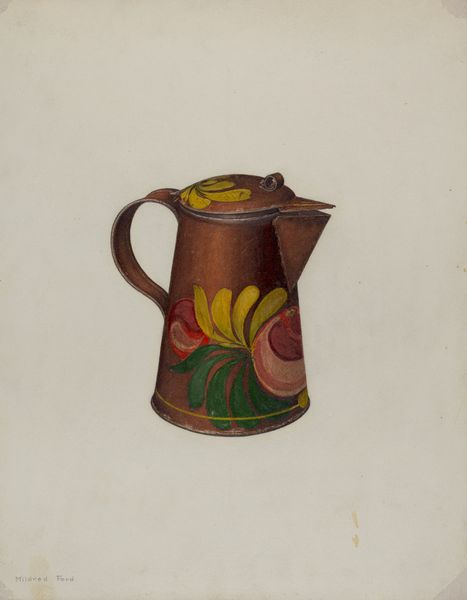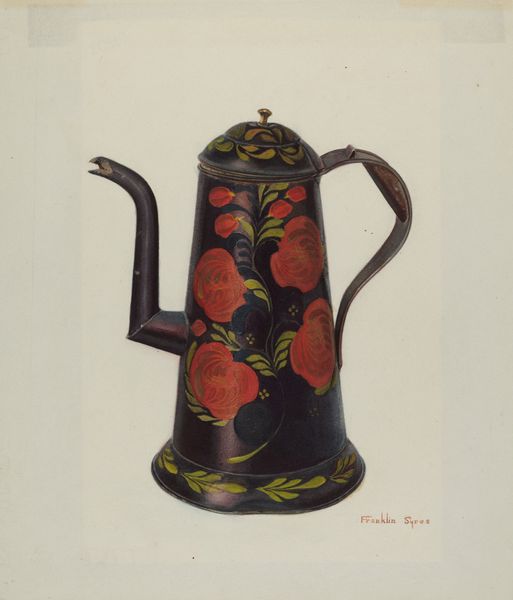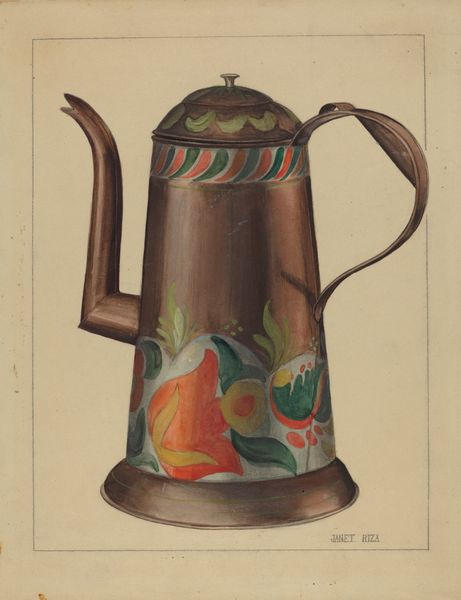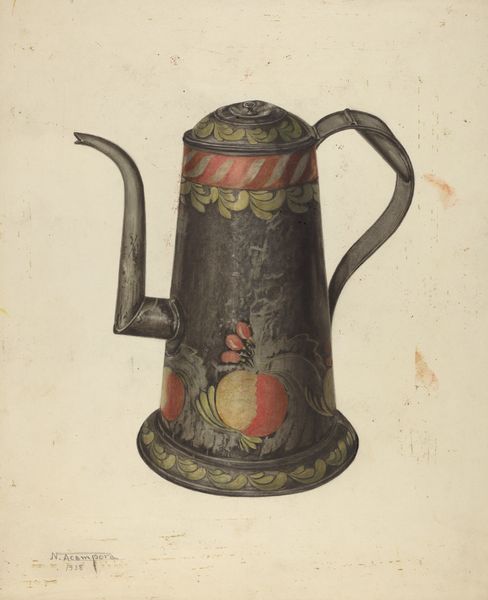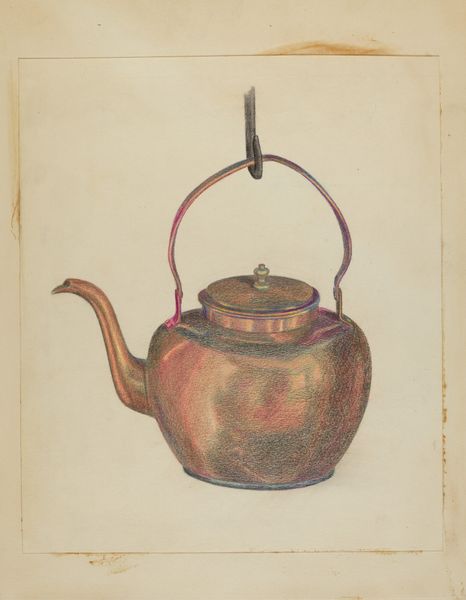
drawing, watercolor
#
drawing
#
caricature
#
watercolor
#
pencil drawing
#
decorative-art
Dimensions: overall: 35.7 x 28.2 cm (14 1/16 x 11 1/8 in.) Original IAD Object: 9" wide; 6 5/8" high
Copyright: National Gallery of Art: CC0 1.0
Curator: We’re looking at Jacob Gielens' "Toleware Tin Coffee Pot," made around 1938. It's a delicate drawing combining watercolor and pencil to capture the essence of decorative art. Editor: It gives off such a cozy feeling, doesn’t it? There’s a certain homeliness that radiates from this humble object. The black of the pot, coupled with the folk-art painting makes it feel very...nostalgic. Curator: Precisely. Toleware, or painted tinware, represents more than just functional objects. They showcase how decorative traditions become ingrained in daily life and cultural identity. Each flourish and color choice echoes generations of artisans. Editor: I am wondering about its accessibility back in the day, how did it affect different social classes. Also, does that central floral motif carry specific regional significance, considering toleware's geographic distribution in the U.S. and beyond? Curator: Likely! Folk art, like toleware, frequently utilizes symbolism rooted in local customs. Flowers might represent growth, hope, or remembrance, all very personal. As far as the status of this style, this would not have been the top shelf of society but rather part of an emerging sense of the decorative among the working class. Editor: And does the artistic rendering itself – the use of watercolor to mimic the glossy surface of the tin – influence the meaning? It adds another layer. Curator: Absolutely, the medium interacts directly with the message. The gentle sheen evokes a sense of handmade care, drawing us closer to the craftsmanship that underlies toleware. Think how labor practices and cultural values all intertwine! Editor: It’s fascinating how a seemingly simple coffee pot can open such doors. It makes you consider objects we consider utilitarian in today's society. Will someone admire a water-bottle the same way 80 years from now? Curator: I agree wholeheartedly. By carefully documenting even these 'everyday' images, Gielens calls us to explore a deeper layer to find symbolism that might have otherwise been overlooked by broader audiences. Editor: This whole discussion makes me crave a good, strong cup of coffee. Maybe from a vintage toleware pot? Curator: Indeed. May this guide bring you heightened consideration as you encounter these historical vestiges.
Comments
No comments
Be the first to comment and join the conversation on the ultimate creative platform.
